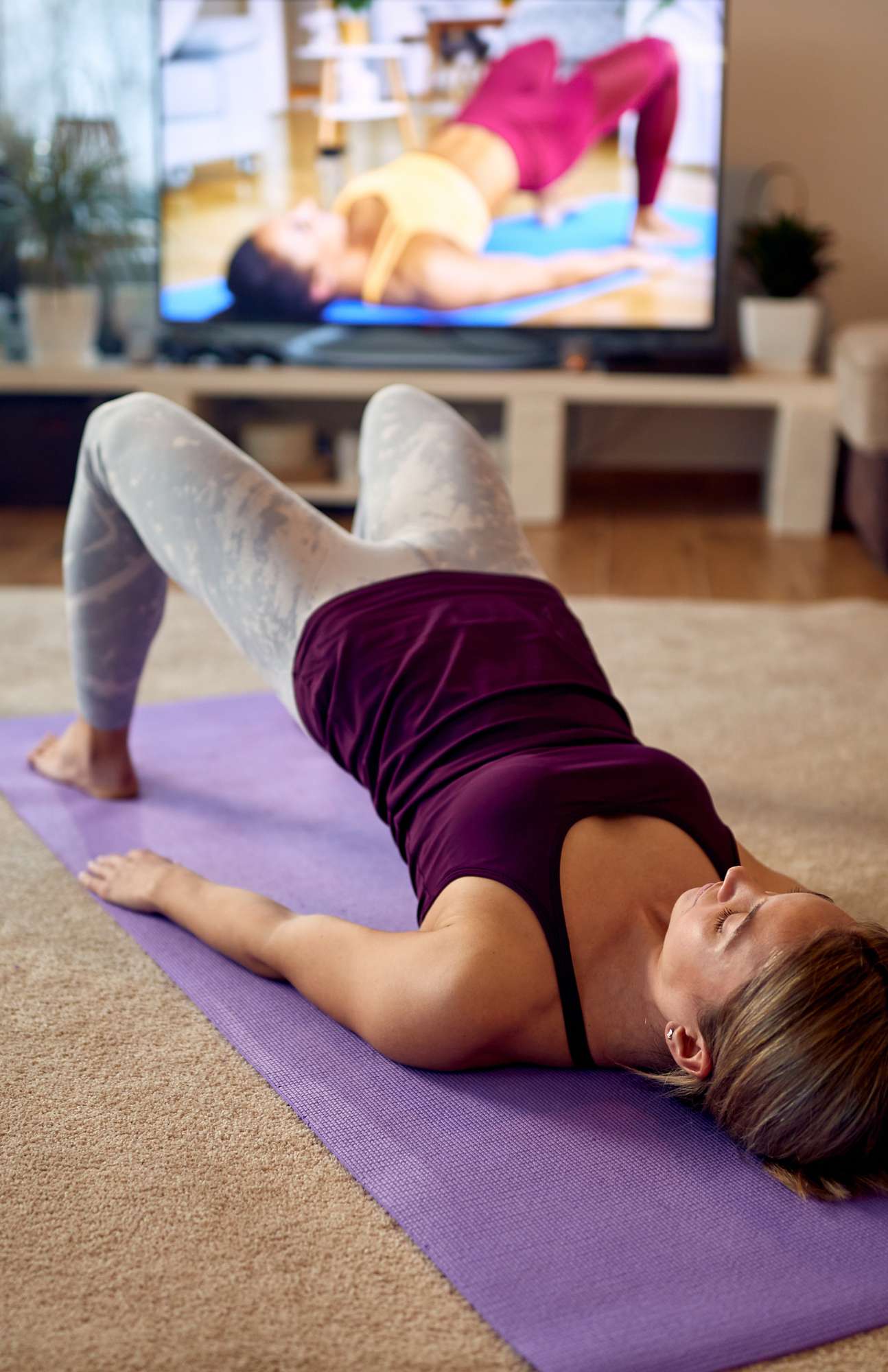Discover the Best Exercises for Sciatica Hip Pain
Sciatica hip pain can be incredibly debilitating, affecting your daily activities and overall quality of life. If you’re struggling with this condition, you’re not alone. Many people experience sciatica hip pain due to various factors such as herniated discs, spinal stenosis, or even pregnancy. The good news is that there are exercises specifically designed to alleviate this pain and help you regain your mobility.
In this article, we will delve into the causes of sciatica hip pain, explore the benefits of exercise, discuss different types of exercises, and reveal the best exercises for sciatica hip pain.

Table of Contents
Understanding Sciatica Hip Pain
Before we delve into the best exercises for sciatica hip pain, it’s essential to have a clear understanding of what sciatica hip pain is. Sciatica pain refers to the pain that radiates along the path of the sciatic nerve, which runs from your lower back, through your buttocks, and down each lower leg. The sciatic nerve is the largest nerve and thickest nerve in your body.
The pain of sciatica typically affects one side of the body and can range from mild discomfort to excruciating pain. Typical sciatica symptoms include radiating pain, low back pain, leg pain, numbness, tingling, and a burning sensation anywhere along the sciatica nerve pathway.

Causes of Sciatica Hip Pain
Sciatica hip pain can be caused by various factors, including a herniated disc, pregnancy, spinal stenosis, piriformis syndrome or even muscle imbalances.
One of the most common causes of sciatica is a herniated disc. It occurs when the soft inner core of a spinal disc protrudes through the outer layer, causing pressure on the spinal cord, nerve roots and the sciatic nerve.
Sciatica during pregnancy can be debilitating to say the least! I’ve personally experienced it with my pregnancies and it’s no fun at all.
Spinal stenosis, on the other hand, is the narrowing of the spinal canal, which can compress the sciatic nerve.
Piriformis syndrome and sciatica have similar symptoms but are caused by different conditions. Piriformis syndrome is a neuromuscular disorder that occurs when the piriformis muscle, located in the buttock region, spasms and compresses or irritates the sciatic nerve.
Muscle imbalances, such as tight hamstrings or a weak core, can also contribute to sciatica hip pain.
Understanding the cause of your sciatic nerve pain is crucial in determining the most effective exercises for your condition.
Benefits of Exercise for Sciatica Hip Pain
Exercise can play a vital role in managing and alleviating sciatica hip pain. Engaging in regular physical activity helps to strengthen the muscles that support the spine, improve flexibility, and promote overall spinal health.
Exercise also helps to release endorphins, which are the body’s natural pain relievers, providing a natural way to manage pain.
Additionally, exercise is the best way to improve blood circulation, which helps to reduce inflammation and promote healing. Incorporating exercise into your daily routine can bring about significant improvements in your overall well-being.

Types of Exercises for Sciatica Hip Pain
When it comes to relieving sciatica hip pain, there are several types of exercises that can be beneficial. These exercises can be classified into stretching exercises, strengthening exercises, low-impact exercises, and aerobic exercises.
Stretching Exercises
Stretching exercises are particularly effective in relieving sciatica hip pain by improving flexibility, range of motion and reducing muscle tension.
Simple stretches such as: Hamstring stretches, hip stretches, and piriformis stretches are some examples of some of the best stretches that can help alleviate sciatica hip pain.
These sciatica stretches target the muscles that often contribute to the compression of the sciatic nerve, promoting relaxation and provide pain relief.
Strengthening Exercises
Strengthening exercises focus on building strength in the muscles that support the spine, providing stability and preventing further injury. Pelvic bridge exercises and bridge exercises are excellent choices for strengthening the core, buttocks, and lower spine, which play a crucial role in maintaining proper spinal alignment and relieving sciatica hip pain.

Low-Impact Exercises
Low-impact exercises are gentle on the joints and are ideal for individuals with sciatica hip pain. Walking and swimming are excellent low-impact exercises that help to improve cardiovascular health, strengthen muscles, and promote overall well-being without putting excessive strain on the body.
Aerobic Exercises
Aerobic exercises, such as cycling or using an elliptical machine, can be beneficial for individuals with sciatica hip pain. These exercises increase blood flow, improve cardiovascular health, and help with weight management. However, it’s essential to ensure proper form and avoid excessive strain on the lower back and hips while performing aerobic exercises.
Best Exercises for Sciatica Hip Pain
Now that we’ve covered the different types of exercises, let’s explore the best exercises for sciatica hip pain relief:
Hamstring Stretches
Hamstring stretches are effective in relieving sciatica hip pain by targeting the muscles at the back of the leg. One simple hamstring stretch involves lying on your back and using a towel or exercise band to gently pull your leg towards your chest. Hold the stretch for 30 seconds on each leg, repeating the exercise three times.
Hip Stretches
Hip stretches help to release tension in the hip muscles and reduce pressure on the sciatic nerve. One effective hip stretch involves sitting on the edge of a chair, crossing one ankle over the opposite knee, and gently leaning forward until you feel a stretch in your hip. Hold the stretch for 30 seconds on each side, repeating it three times.
Pelvic Bridge
The pelvic bridge exercise is an excellent choice for strengthening the core, buttocks, and lower back muscles. To perform this exercise, lie on your back with your knees bent and feet flat on the floor. Slowly lift your hips off the ground, forming a straight line from your knees to your shoulders. Hold this position for a few seconds before lowering your hips back down. Repeat this exercise for 10 to 15 repetitions.
Bridge Exercises
Bridge exercises are another effective way to strengthen the muscles that support the spine and alleviate sciatica hip pain. Lie on your back with your knees bent and feet flat on the floor. Slowly lift your hips off the ground, keeping your shoulders and upper back on the floor. Hold this position for a few seconds before lowering your hips back down. Repeat this exercise for 10 to 15 repetitions.
Piriformis Stretches
The piriformis muscle is located deep within the buttocks and can often contribute to sciatica hip pain. Piriformis stretches help to release tension in this muscle and alleviate pressure on the sciatic nerve. One simple piriformis stretch involves lying on your back and crossing one ankle over the opposite knee. Gently pull the crossed leg towards your chest until you feel a stretch in your buttocks. Hold the stretch for 30 seconds on each side, repeating it three times.
Walking or Swimming
Walking or swimming are low-impact aerobic exercises that can be incredibly beneficial for individuals with sciatica hip pain. These exercises help to strengthen muscles, improve cardiovascular health, and promote overall well-being. Aim for at least 30 minutes of walking or swimming on most days of the week.

Precautions and Tips for Exercising with Sciatica Hip Pain
While exercise for sciatica hip pain can be incredibly beneficial, it’s essential to exercise caution and follow these precautions and tips:
- Start slowly and gradually increase the intensity and duration of your exercises.
- Listen to your body and stop exercising if you experience any sharp or worsening pain.
- Avoid exercises that exacerbate your pain or put excessive strain on the lower back and hips.
- Warm-up before exercising and cool down afterward to prevent muscle stiffness and injury.
- Consult with a healthcare professional or physical therapist before starting any exercise program.
Consulting a Healthcare Professional for Sciatica Hip Pain
If you’re experiencing persistent or severe sciatica hip pain, it’s crucial to consult with a healthcare professional. They can assess your condition, provide an accurate diagnosis, and recommend some treatment options.
They may also refer you to a physical therapist who can guide you through specific stretches and exercises and techniques specifically tailored to your needs.

Incorporating Exercise into Your Daily Routine
To reap the full benefits of exercise for sciatica hip pain, the most effective way is to incorporate it into your daily routine.
Set aside dedicated time for gentle stretches and exercise and make it a priority.
Consider finding an exercise buddy or joining a class to stay motivated and accountable.
Remember that consistency is key when it comes to managing and alleviating sciatica hip pain.
Other Forms of Treatment for Sciatica Hip Pain
While exercises for sciatica hip pain are an excellent way to manage the condition, there are other forms of conservative treatment that can be beneficial for sciatica.
These may include medications, physical therapy, chiropractic care, acupuncture, or even surgery in severe cases.
It’s important to work with your healthcare professional to determine the best course of action based on your symptoms of sciatica and the underlying cause of your pain.
Conclusion
Sciatica hip pain can be debilitating, but with the right exercises and treatment, relief is possible. By understanding the causes of sciatica hip pain, incorporating exercises for sciatica hip pain into your daily routine, and seeking the guidance of a healthcare professional, you can take control of your pain and regain your mobility.
Remember to start slowly, listen to your body, and always consult with a professional to ensure your safety. Don’t let sciatica hip pain hold you back – unlock relief through the power of exercise.






